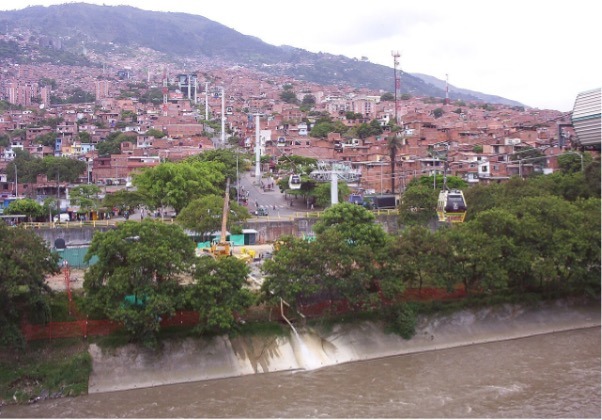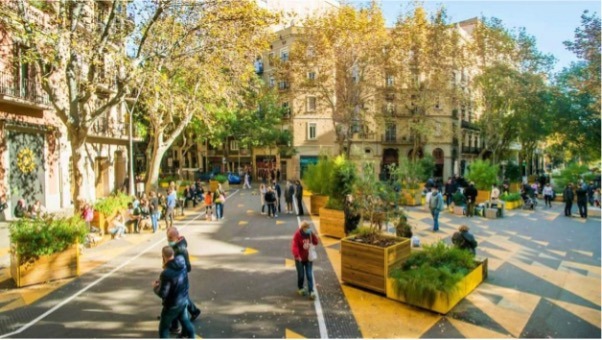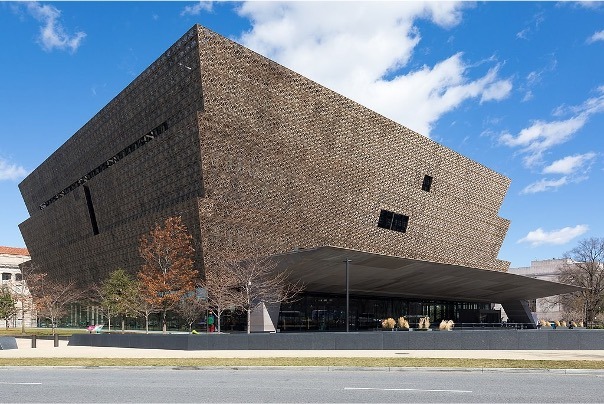By Lawrence Intalan, M.Arch RIBA UAP
Introduction
Architecture plays a pivotal role in shaping the built environment, directly influencing the quality of life and well-being of individuals by creating spaces that are not only aesthetically pleasing but also functional and inclusive. With the growing recognition of human rights in urban development, architects and urban planners are increasingly tasked with designing spaces that prioritise inclusivity, accessibility, and cultural sensitivity. These design principles not only contribute to the overall liveability of urban areas but also support the United Nations Sustainable Development Goal 11 (SDG-11), which aims to promote sustainable cities and communities (United Nations , 2015).
By embracing these principles, architects and planners can work towards creating environments that are not only beautiful and functional but also socially and environmentally sustainable. This article delves into three critical aspects of architecture as a vehicle for human rights protection: inclusive urban design, the right to accessibility, and cultural sensitivity. Each section explores these themes with relevant examples that illustrate the profound impact thoughtful architecture can have on promoting human dignity and social equity.
Inclusive Urban Design: A Human Rights Perspective
Inclusive urban design is a holistic approach that seeks to create built environments that are accessible and accommodating to all members of society, particularly those from marginalised and vulnerable groups (Roggema, 2016). This approach considers the diverse needs of residents, aiming to ensure that urban spaces promote social equity, inclusivity, and active participation for everyone. The goal is to foster a sense of belonging and community engagement within cities while addressing the unique requirements of different demographics. An excellent example of this approach is seen in the transformation of the Medellín Metrocable in Colombia.

Initially, Medellín grappled with significant socio-economic disparities, especially in its hillside neighbourhoods. The implementation of the Metrocable system was a pivotal step in addressing these disparities. By connecting these previously isolated areas with the city centre, the Metrocable system effectively reduced travel time and improved access to essential services such as education, employment, and public amenities. This integration of public transportation not only created economic opportunities but also played a crucial role in fostering social inclusion by breaking down physical and social barriers. The redesign of the Medellín Metrocable serves as a powerful example of how inclusive urban design can significantly improve the quality of life for residents. By providing equitable access to urban resources, it empowers communities and upholds human rights, ultimately contributing to the overall well-being and prosperity of the city’s inhabitants.
The Right to Accessibility in Architecture and Urban Design
The right to accessibility is a fundamental human right that ensures equal participation in society for all individuals, regardless of their physical abilities (Convention on the Rights of Persons with Disabilities, 2006). Universal design principles promote the creation of environments, products, and systems that are accessible and usable by people of all abilities, including those with disabilities. These principles aim to eliminate barriers and ensure inclusivity, allowing everyone to navigate and utilise spaces and resources without limitations.
A prominent example of this is the Universal Accessibility Plan implemented by the City of Barcelona, which places a strong emphasis on addressing the needs of individuals with mobility challenges. The city has taken various measures to achieve this, including the installation of tactile paving, ensuring the accessibility of public transportation, and removing architectural barriers in public buildings. These initiatives are in line with the principles outlined in the Convention on the Rights of Persons with Disabilities, which underscores the significance of creating an inclusive environment. By prioritising accessibility in urban spaces, Barcelona not only respects the rights of its citizens but also fosters active engagement in community life, thereby reinforcing the idea that accessibility is indeed a fundamental human right.

From an architectural perspective, Barcelona’s urban accessibility programme sets a significant precedent by demonstrating how thoughtful design and planning can protect and promote human rights. By incorporating universal design principles into the city’s infrastructure, Barcelona serves as a model for other urban environments seeking to uphold the rights of all individuals, regardless of physical ability. The removal of architectural barriers and the implementation of accessible public spaces not only contribute to the physical accessibility of the city but also symbolise a commitment to inclusivity and equality. Barcelona’s approach to urban accessibility highlights the crucial role that architecture and urban planning play in safeguarding human rights and fostering a more equitable society for all.
Cultural Sensitivity in Architectural Design
Cultural sensitivity in architecture is a crucial aspect that involves acknowledging, understanding, and respecting the varied cultural identities and historical influences of people that contribute to the fabric of urban spaces (Alnaim, 2024). It underscores the significance of creating environments that not only accommodate but also reflect the values, traditions, and customs of the specific local communities they serve. This approach involves a deep consideration of the social, historical, and cultural context in which the architecture exists, aiming to foster inclusivity and a sense of belonging for all individuals within the built environment.
The National Museum of African American History and Culture in Washington, D.C., designed by the architect David Adjaye, stands as an exemplary embodiment of this approach. The museum’s architectural language and symbolic references to African American history are deeply rooted in the principles of celebrating diversity, equality, and human rights.

In the museum’s design process, stakeholders’ input was not only welcomed but actively sought out, serving as a cornerstone of the participatory planning approach. This inclusive method ensured that diverse voices and perspectives were honoured and integrated into the architectural narrative, thus celebrating the richness and diversity of the African American experience. By embracing and amplifying the cultural heritage and historical significance of African Americans, the museum serves as a powerful testament to the importance of recognising and safeguarding cultural identities as a way to protect human rights and uphold social justice.
Furthermore, the architectural design of the museum draws inspiration from a crown- like form found in traditional Yoruba art. This shape is intended to represent the strength and resilience of African American culture (Castro, 2019).The thin screen is embellished with geometric patterns that draws inspiration from the historic ironwork commonly found in African-American communities in Charleston, South Carolina and New Orleans, Louisiana. This pays homage to the cultural heritage it represents and serves as a visual declaration of the museum’s commitment to equality and diversity. By integrating these principles into its very architecture, the museum not only provides a space for education and reflection but also holds a mirror to society, emphasising the significance of embracing cultural sensitivity and participatory planning as vital tools in the protection and advancement of human rights.
Conclusion
Architecture plays a crucial role in safeguarding human rights by providing a framework for creating urban environments that are inclusive, accessible, and culturally sensitive. This involves designing spaces and structures that accommodate people of all abilities and backgrounds, and that respect and reflect diverse cultural identities. By incorporating these principles into architectural design, we can help ensure that everyone has equal access to the built environment and can fully participate in society. The examples of Medellín Metrocable, Barcelona’s universal accessibility initiatives, and the National Museum of African American History and Culture demonstrate how thoughtful design can enhance social equity and empower communities.
As we move towards realising the goals outlined in SDG-11, it is imperative that architects and urban planners continue to prioritise human rights in their work, ensuring that cities not only accommodate diverse populations but also celebrate their rich cultural heritage. Ultimately, architecture must be seen not just as a means of shelter but as a vital instrument for promoting dignity, equity, and human rights for all (UIA Community Architecture and Human Rights Work Programme).
Acknowledgement
The author extends profound gratitude to the following individuals:
Qazi M-ARIF, Co-Director, UIA Community Architecture & Human Rights Work Programme Sara Sartini, Co-Director, UIA Community Architecture & Human Rights Work Programme
References
Alnaim, M. M. (2024). Cultural Imprints on Physical Forms: An Exploration of Architectural Heritage and Identity. Retrieved from Scientific Research Publishing (SCIRP): https://www.scirp.org/journal/paperinformation?paperid=131806
Castro, F. (2019). Smithsonian National Museum of African American History and Culture / Adjaye Associates. Retrieved from ArchDaily: https://www.archdaily.com/794203/smithsonian-national-museum-of-african-american-history-and-culture-adjaye-associates#
Convention on the Rights of Persons with Disabilities. (2006). Retrieved September 20, 2024, from UN Office of the High Commissioner of Human Rights: https://www.ohchr.org/en/instruments-mechanisms/instruments/convention-rights-persons- disabilities
Galvin, M., & Maassen, A. (2019). Urban Transformations: In Medellín, Metrocable Connects People in More Ways Than One. Retrieved from World Resources Institute: https://www.wri.org/insights/urban-transformations-medellin-metrocable-connects-people- more-ways-one
Petit, A. M., Morera, S., Parra, L. T., & Valladares, M. (2022). The Accessibility Chain: A Challenge and an Opportunity for Cities and People with Disabilities. Retrieved from The Journal of Public Space:https://www.journalpublicspace.org/index.php/jps/article/view/1604
Petrov, P. (2022). Reclaiming City Streets from Cars, Barcelona Style. Retrieved from The Mayor.eu:https://www.themayor.eu/en/a/view/reclaiming-city-streets-from-cars-barcelona- style-9938
Roggema, R. (2016). The future of sustainable urbanism: a redefinition. City, Territory and Architecture volume 3, Article number: 22. https://cityterritoryarchitecture.springeropen.com/articles/10.1186/s40410-016-0052-y
Subhedar, N. M. (2022). Inclusive Spaces: Implementing Universal Design Principles in Urban Architecture. Retrieved September 18, 2024, from RTF | Rethinking the Future: https://www.re-thinkingthefuture.com/architectural-community/a12838-inclusive-spaces- implementing-universal-design-principles-in-urban-architecture/
UIA Community Architecture and Human Rights. (n.d.). Retrieved from UIA – International Union of Architects: https://www.uia-architectes.org/en/workprogram/community- architecture-human-rights_uia/
United Nations . (2015). Retrieved from UN Department of Economic and Social Affairs Sustainable Development: https://sdgs.un.org/2030agenda